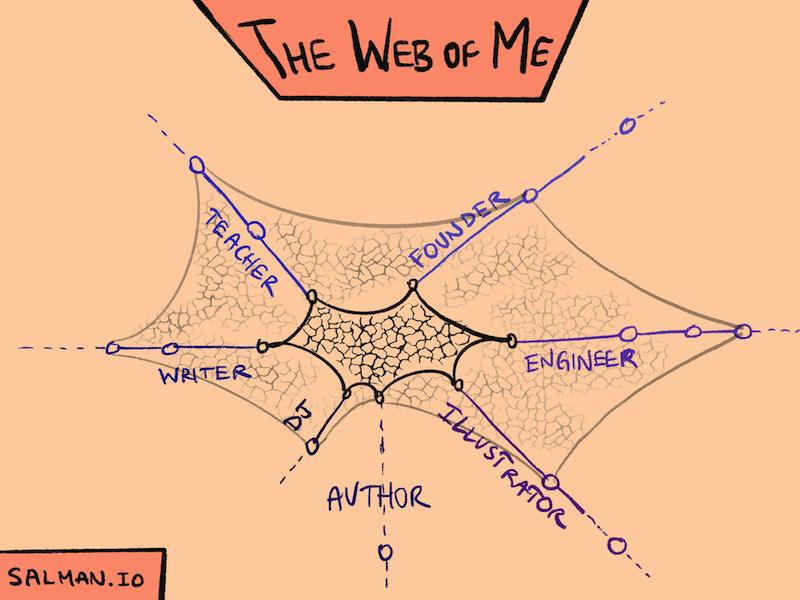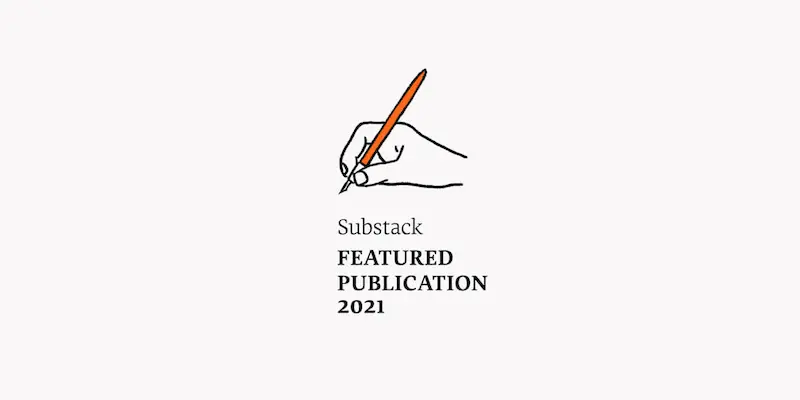Versioning Myself
After I went through a phase of burnout, I took a sabbatical. It led to an awakening of sorts, both intellectually and spiritually. Afterwards, friends told me I seemed like a new person. They called me ‘Salman 2.0’. This made me wonder: When, exactly, did I change ‘versions’? And what will ‘Salman 3.0’ be like?
It’s fascinating to reflect upon my life in terms of versions. The major milestones society tends to focus on are things like birthdays, graduations, and new jobs. But in my experience, those transitions never yielded new versions of me. My life changed, but I didn’t. The real agents of change come through transformative experiences, rather than societal milestones.
To fuel drastic change, you need a strong catalyst. Personal transformations are often sparked by pain, struggle, or near-death experiences. For me, the trigger was burnout. The sheer weight of the pain and numbness forced me to stop and ask a lot of hard questions about what I really want. I firmly believe that if I hadn’t experienced burnout, I would have just kept running on my proverbial treadmill.
I’m not sure where I’d be now (perhaps founding another startup), but I definitely would not be here writing to you. I likely wouldn’t have the freedom and space to talk to friends for hours on end, draw comics and animations for no reason beyond having fun, or write a book of fables. When I look back at that period of my life, I’m thankful for it. The pain was part of the journey. I needed it, as a rock needs the harsh storms of wind and water to smooth it. My gray hairs remind me of the life I lived, the dues I paid to be the person I am today.
Even once I reached ‘2.0’, my life was still full of struggle. The problems didn’t go away, they just evolved into different problems. I had to figure out how to build a new life that served my new outlook..
I’m still working on it. It hasn’t been easy, and I’m starting to think it might be a lifelong process. At times, I’m tempted by the simplicity of following a path curated by others (e.g. a career path dictated by your company). But then I remember the freedoms I enjoy — a reward of my hard efforts to carve my own path, along with the privilege to be able to do so.
Personal pathfinding is a lifetime journey with no destination.
Part of hiking through this rocky path is accepting that I will have to put in the work. Self-actualization is not an automatic process. Even though I’ve made major breakthroughs, I have to keep working on myself in order to keep growing. Otherwise, I let ‘2.0’ become yet another meaningless milestone. My urge to keep growing is what must drive me to move forward and unlock entirely new sides of myself.
The idea of versioning ourselves is a powerful one — but it has its limits. For one thing, our concept of versioning assumes an entity that has a single version number at any given time. The idea of having one true version of ourselves doesn’t fit the reality of our varied personalities.
As they say: We contain multitudes.
Our personal progress is multi-pronged — we lag in some areas, and move forward in others. Perhaps then, instead of asking myself what version I’m on right now, I should be asking myself what versions I’m on. Each of these different parts of me has their own progression, and could be versioned separately:
Assigning numbers loosely, I could describe myself as a list of versions:
- Salman the founder, v1.0 (inactive)
- Salman the engineer, v3.1 (active)
- Salman the writer, v2.1 (active)
- Salman the book author, v0.4 (beta)
- Salman the teacher, v1.5 (inactive)
- Salman the illustrator, v1.2 (active)
- …
I could draw myself as a web:

One of the key principles of my life is embracing my inner polymath, which means that I run toward the many sides of myself, rather than seeking to simplify them into a singular line. But as I shared in my essay, The Polymath Playbook, this has to be done with pragmatism and intentionality.
I cannot move forward on all axes at once. So how do I grow my multitudes, without spreading myself too thin? One approach is to simply take turns. Robin Sloan’s excellent advice for newsletter writers is relevant for the parts of our lives:
Divide them into seasons, just like a TV show. Instead of trying to do everything in perpetuity, we can hibernate some parts of us, while others blossom into their springs. Each season becomes like a life on its own. How many lives can we weave within the singular one we are given?
Our personal growth is not limited only to expansion alone. Sometimes, in order to grow, we must liberate ourselves from the parts of us that no longer give us life. Some parts may never get a second season. And that’s okay. The winding paths we walk in life will inevitably lead to new replacing old, a process as natural as leaves falling to make room for spring growth.
Let us stay open-minded to the future paths we haven’t met yet. We may not be able to imagine what they look like today. But some day, we might not be able to imagine life without them.
If you liked this post, you might also enjoy these:
- The Polymath Playbook — I share the story of my life and how I learned to embrace my inner polymath. In a world built for specialization, the polymath approach can help us differentiate ourselves and discover meaningful work.
- Echoes of Reflection — Reflections on my struggles dealing with burnout. I learned to find comfort in the deep questions of my life, rather than chasing simple answers.
- Embracing Uncertainty — I struggled to cope with life during a pandemic. As much as I wanted stability in my life, I had to learn to embrace uncertainty.

